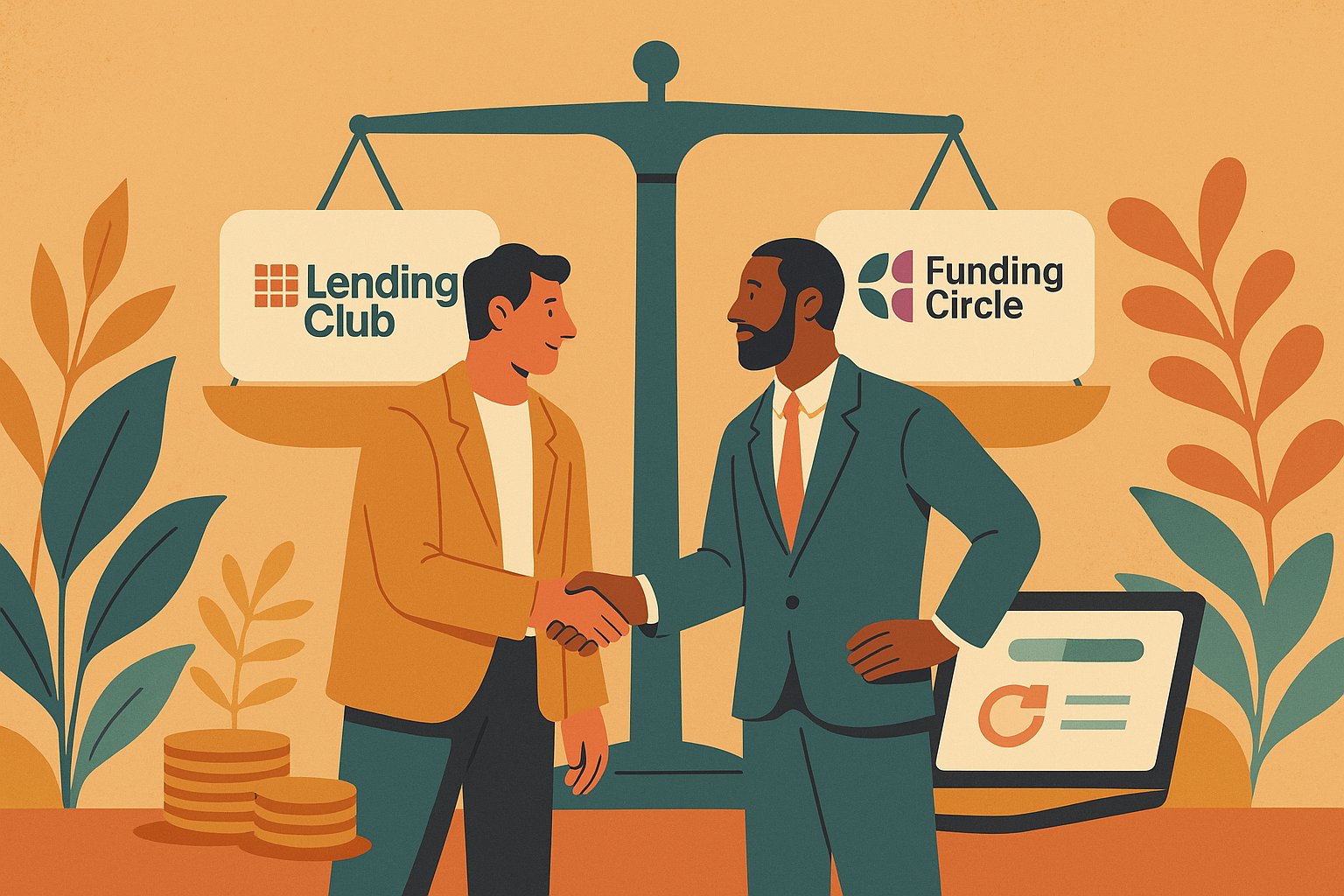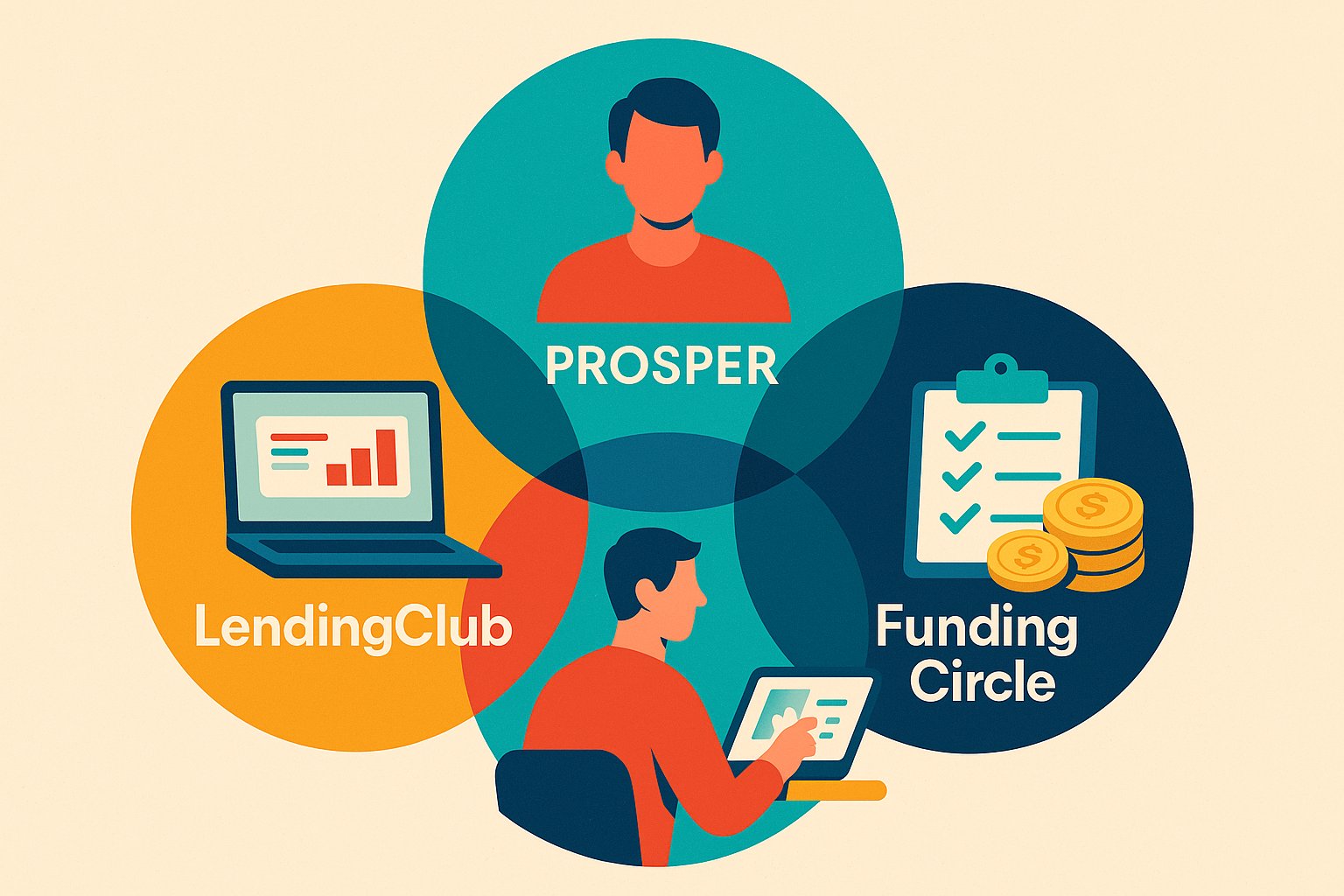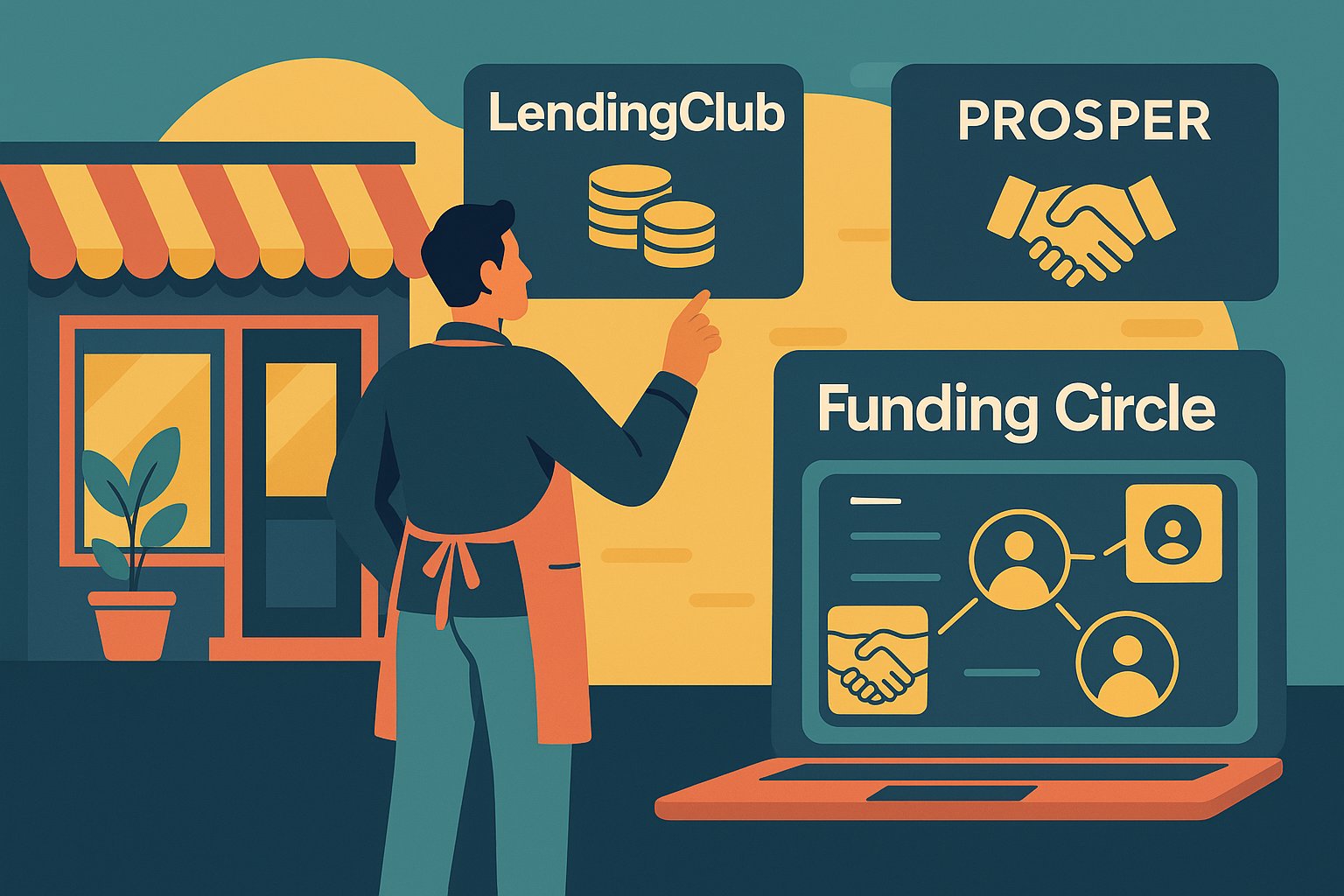A Fresh Perspective on Business Borrowing Needs
When a business reaches a certain level of maturity, its financing requirements evolve significantly. Established enterprises seeking growth capital often need more than a quick injection of cash; they crave predictable repayment structures, competitive interest rates, and a lending partner that understands their unique trajectory. Two prominent contenders in the peer-to-peer and marketplace lending sphere are Funding Circle and LendingClub. Both platforms have built reputations for providing accessible financing solutions, yet their approaches to underwriting, fee structuring, and customer support diverge in meaningful ways. In this guide, we’ll explore how each lender caters to business borrowers, enabling you to make an informed decision that aligns with your company’s current stability and future ambitions.
Unpacking Funding Circle’s Business Lending Blueprint
Since launching in the United States in 2013, Funding Circle has focused exclusively on lending to small and medium-sized businesses. Unlike platforms that blend consumer and business lending, Funding Circle positions itself as a dedicated business lender, connecting accredited investors and institutional funds directly with companies that demonstrate stable revenues and a solid operational history. The platform requires applicants to have been in operation for at least two years, with minimum annual revenues typically set around $150,000. Through an automated underwriting engine coupled with manual review by seasoned credit analysts, Funding Circle evaluates cash flow, profitability, and industry risks to offer term loans ranging from $25,000 up to $500,000 or more. Borrowers appreciate the transparent structure—Funding Circle charges a one-time origination fee (usually between 3% and 6%) and provides fixed monthly payments over terms spanning six months to five years.
By prioritizing business financials over personal credit profiles, Funding Circle tends to attract enterprises that have demonstrated a consistent track record of growth. The platform’s streamlined digital dashboard lets business owners track the status of their applications, submit required financial documents, and see projected funding dates at a glance. Once approved, funds are typically disbursed within two to three business days, granting businesses the agility to act swiftly on new opportunities. Furthermore, Funding Circle’s emphasis on transparency means borrowers know their exact APR upfront, avoiding surprises during the loan lifecycle. This clarity, paired with competitive rates for established businesses, forms the backbone of Funding Circle’s value proposition to borrowers looking to scale responsibly.
Examining LendingClub’s Evolving SMB Financing Portfolio
LendingClub, founded in 2007 as a pioneer in peer-to-peer lending, initially focused on personal loans for consumers. Over time, the platform expanded its product suite to include small business financing options. Today, LendingClub offers a dedicated business line called LendingClub Business, which provides term loans ranging from $5,000 to $500,000. To qualify, businesses typically need at least one year of operational history and annual revenues exceeding $75,000—thresholds that are slightly lower than Funding Circle’s benchmarks. While LendingClub’s underwriting process still factors in personal credit scores of the business owner(s), it also assesses business cash flow, debt-to-income ratio, and financial health to determine eligibility and pricing.
One distinctive advantage of LendingClub is its tiered APR offerings. Businesses with stronger credit profiles and stable cash flow can secure APRs as low as the high single digits, whereas those with borderline metrics may see rates climb into the high teens. LendingClub’s origination fee structure generally ranges from 3% to 6%, similar to its competitors, yet its platform occasionally runs promotional offers that reduce fees for qualified borrowers. In contrast to Funding Circle’s strictly business-centric focus, LendingClub integrates both consumer and business lending operations, which can translate to slightly faster technology updates but a less specialized support model for enterprise-level borrowers. Nevertheless, the platform’s established brand, robust online dashboard, and integration with major accounting software allow borrowers to monitor payments, manage balances, and plan future borrowings with relative ease.
Deciphering Interest Rates and Fee Structures
One of the most critical aspects for any borrower is the total cost of capital—namely, interest rates and any associated fees. Funding Circle advertises APRs that generally range from the mid-single digits to the mid-teens, depending on factors such as credit score, revenue consistency, and time in business. Its origination fee is a one-time charge deducted from the loan proceeds, usually falling between 3% and 6% of the total amount. Because Funding Circle draws on institutional capital, APRs remain relatively stable, insulating businesses from sudden rate hikes tied to fluctuations in individual investor sentiment. This predictability is particularly valuable for companies budgeting for multi-year projects, as it vastly simplifies cash flow forecasting.
On the other side, LendingClub’s APRs can span from high single digits up to the high teens or even low 20s for higher-risk profiles. Like Funding Circle, LendingClub levies an origination fee—typically between 3% and 6%—but it is sometimes offset by periodic promotional discounts. LendingClub’s rates can be more variable because the platform’s underwriting model still heavily weighs the business owner’s personal credit score. Consequently, borrowers with stellar personal credit can secure better APRs than those whose business shows stronger metrics but whose personal history is slightly weaker. Additionally, LendingClub applies late payment fees and may charge a prepayment fee if the loan is paid off within a certain timeframe. Comparing both platforms’ cost-of-capital upfront is essential: businesses requiring $100,000 or more will often find Funding Circle’s APRs more competitive, whereas smaller ticket borrowers—particularly those with a strong personal credit profile—might benefit from LendingClub’s occasional promotional rates.
Navigating Application Processes and Approval Timelines
Time is of the essence when businesses seek capital for expansion, equipment purchases, or bridging gaps in cash flow. Funding Circle streamlines the application process by focusing heavily on business documentation: applicants need to submit business tax returns, bank statements, and profit-and-loss statements through an online portal. The underwriting process combines automated risk scoring with manual review, yielding a decision typically within three to five business days. Once approved, funds are deposited in the borrower’s bank account within two to three additional days. Throughout the process, Funding Circle’s real-time dashboard offers transparency, showing which documents are pending and when to expect funding, minimizing surprises during critical growth phases.
By contrast, LendingClub offers a relatively quick online application that can be completed in under 15 minutes, asking for both personal and business data—financial statements, credit history, and bank account details. LendingClub’s automated underwriting engine makes an initial credit decision within 24 to 48 hours, contingent upon satisfactory documentation. Fund disbursement after approval usually occurs within three business days. While LendingClub’s streamlined portal is user-friendly, borrowers often note that submitting personal credit history documentation—even when the loan is for business purposes—adds an extra layer of complexity. That said, businesses with solid personal credit scores and up-to-date financials can sometimes experience faster funding than through more specialized lenders.
Eligibility Criteria and Approval Likelihood Considerations
Every lending platform employs its own set of eligibility thresholds, and understanding these can help borrowers anticipate their approval odds. Funding Circle generally requires businesses to have been operating for at least 24 months, maintain annual revenues of at least $150,000, and exhibit a minimum credit score (often around 640). The platform also evaluates industry risks, location, and business owner equity to gauge overall stability. Because of these criteria, Funding Circle is best suited for enterprises that have passed the startup phase and demonstrated consistent revenue growth. Companies falling slightly below these thresholds—such as those with fluctuating cash flow or newer operations—may receive conditional offers at higher interest rates or be directed to smaller financing options.
LendingClub’s requirements can be more flexible in certain respects: the business owner needs a minimum credit score (often around 650), and the business itself should show at least one year of operations with $75,000 or more in annual revenue. LendingClub’s underwriting remains partly anchored to the personal credit of the borrower, which allows some established businesses to qualify even when their corporate financials are in a transitional period. However, businesses lacking strong personal credit or exhibiting irregular profitability may see APRs climb or receive smaller loan offers. In essence, businesses with strong, verifiable financial histories may find a smoother path to approval on Funding Circle, whereas those relying on personal credit can leverage LendingClub to secure capital more quickly—albeit at potentially higher rates.
Flexibility in Repayment Options and Loan Terms
Choosing the right lender for an established business often comes down to how well the repayment structure meshes with operational cash flow. Funding Circle offers term loans with repayment periods from six months up to five years. Borrowers can choose the term length that best aligns with anticipated revenue cycles, and there are no prepayment penalties should the business decide to pay off the loan early. The platform’s user dashboard allows borrowers to schedule payments, view amortization tables, and even adjust certain payment dates when temporary cash flow constraints arise. This flexibility is crucial for businesses with seasonal sales or cyclical expenses, enabling them to avoid the financial strain of a rigid payment schedule during leaner months.
LendingClub also offers term lengths between one and five years, but its repayment flexibility can be subject to certain restrictions. While borrowers are permitted to prepay without incurring interest on the unpaid principal, LendingClub may charge a prepayment fee if the loan is settled within a promotional window—often the first six months. Additionally, late payment fees apply once a payment is more than 10 days overdue, and those fees can increase rapidly if the borrower fails to catch up. Owners of established businesses should carefully examine the fine print in LendingClub’s loan agreement, focusing on any potential penalties or timing constraints, particularly if they anticipate fluctuations in cash flow. When longer repayment horizons and penalty-free early payoff are priorities, Funding Circle’s more accommodating structure often holds the advantage.
Support Systems and Customer Experience Insights
A lender’s commitment to customer service plays a pivotal role when businesses navigate unexpected disruptions or seek strategic advice. Funding Circle has invested significantly in creating a dedicated Business Success Team. This specialized group of account managers reaches out proactively at key milestones—during application, disbursement, and throughout repayment—to ensure borrowers have the assistance they need. Whether it’s adjusting payment dates during a temporary slowdown or providing guidance on future borrowing needs, this hands-on approach fosters long-term relationships. Many established businesses appreciate having a single point of contact who understands industry-specific nuances and can quickly escalate issues, whether operational or financial.
By comparison, LendingClub offers a more standardized support model. Customer service primarily operates through an online help center, phone support, and email inquiries. While LendingClub does offer resources like FAQs, calculators, and educational articles, the platform does not typically assign a dedicated account manager to each borrower. Consequently, businesses that value personalized, consultative interactions may find Funding Circle’s model more aligned with their needs. That said, LendingClub’s online portal remains intuitive, and for businesses comfortable with a digital-first approach, support channels via chatbots and email can be sufficient—especially if the borrower’s primary goal is fast, uncomplicated access to capital.
Real-World Success Stories and Borrower Outcomes
Data speaks volumes, but real-life narratives crystallize each lender’s power in action. Consider a Seattle-based specialty coffee roaster that, after five years of steady growth, needed $200,000 to relocate to a larger facility. The owner turned to Funding Circle, leveraging a strong two-year operating history and $400,000 in annual revenue. Within a week, the application was approved at a 7.9% APR, with a five-year term allowing monthly payments that aligned perfectly with seasonal sales spikes. Thanks to this capital infusion, the roastery expanded production capacity by 150% and entered new retail partnerships, effectively doubling revenue within 12 months. The owner credits Funding Circle’s transparent underwriting and responsive Business Success Team for making the expansion seamless.
In another example, a suburban digital marketing agency leveraged LendingClub to secure $50,000 for equipment upgrades and staffing expansions. Although the agency had only three years in operation, the owner’s strong personal credit score—above 750—allowed LendingClub to offer a 9.5% APR over a three-year term. While monthly payments were higher relative to the agency’s fluctuating cash flow, the rapid funding timeline (approved in 48 hours, funds disbursed in three days) enabled the agency to onboard new talent quickly, resulting in a 35% revenue boost within six months. The owner acknowledges that LendingClub’s structure made a real difference in seizing immediate growth opportunities, even if the repayment plan felt tighter than what larger, more seasoned companies might prefer.
Making a Strategic Choice for Your Business’s Growth
When weighing Funding Circle against LendingClub, established businesses must consider their financial health, funding size, and desired level of support. If your company has been operating for at least two years, boasts annual revenues above $150,000, and needs $100,000 or more, Funding Circle’s business-centric underwriting, competitive APRs, and dedicated account managers likely offer the best path to sustainable growth. In contrast, if you need under $75,000, possess an excellent personal credit history, and desire a swift, largely automated process, LendingClub could be the faster, more convenient choice—albeit potentially at a slightly higher borrowing cost.
Regardless of the platform you choose, it’s essential to gather real-time quotes, compare APRs side by side, and understand every fee and term before committing. Both Funding Circle and LendingClub have transformed the alternative lending landscape by democratizing access to capital, yet their core philosophies differ: Funding Circle centers its entire infrastructure on business performance, while LendingClub remains more balanced between consumer and business lending. By aligning your company’s present financial profile with the strengths of each platform, you can forge a borrowing strategy that not only funds your next milestone but also positions your business for lasting success.




